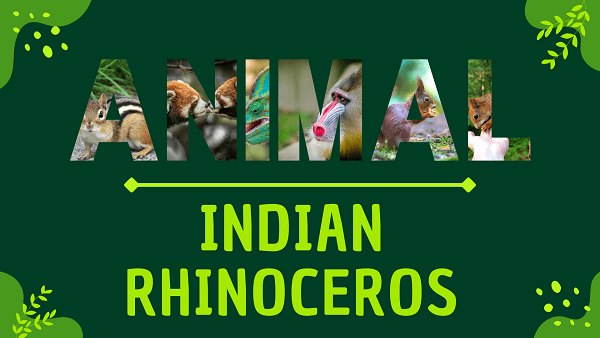
Indian Rhinoceros | Facts, Diet, Habitat & Pictures
Indian Rhinoceros Overview
Appearance
The Indian rhinoceros, also known as the greater one-horned rhinoceros, is a massive and imposing creature. Its defining feature is its thick, grayish-brown skin, which forms intricate folds and creases, resembling a suit of armor.
Its single horn, composed of keratin, sits prominently on its snout. This formidable beast has a robust and stocky body with relatively short legs, adapted for its terrestrial habitat. The Indian rhinoceros is a symbol of strength and resilience in the wild.
Origins And Evolution
The origins and evolution of the Indian rhinoceros can be traced back millions of years. Fossil evidence suggests that rhinoceros-like ancestors roamed Eurasia and North America during the Eocene epoch.
The Indian rhinoceros is one of the oldest living mammal species, with a lineage dating back 15-20 million years. This ancient lineage has seen the Indian rhinoceros adapt to a variety of habitats, from forests to grasslands. It is characterized by its thick, folded skin and single horn.
Through evolution, the Indian rhinoceros has persisted through changing climates, geological events, and shifts in vegetation, highlighting its resilience as a species adapted to its environment and serving as a testament to the intricate web of life on Earth.
Behavior and Lifestyle
The Indian rhinoceros is a largely solitary and territorial herbivore. It prefers a solitary lifestyle, with adults maintaining large home ranges and marking territories with urine and dung. These rhinos are predominantly crepuscular and spend their days wallowing in mud to regulate body temperature and protect their thick skin from parasites.
They are strong swimmers and often cross rivers in their habitat. Grazing on grasses and aquatic plants, they are selective feeders, using their prehensile lip to grasp and consume vegetation efficiently.
Scientific Classification
- Kingdom: Animalia
- Phylum: Chordata
- Class: Mammalia
- Order: Perissodactyla
- Family: Rhinocerotidae
- Genus: Rhinoceros
- Species: Rhinoceros unicornis
Indian Rhinoceros Locations
- India
- Nepal
- Bhutan
- Bangladesh
- Northern Myanmar (Burma)
Fast Facts
- Name: Indian Rhino
- Scientific Name: Rhinoceros unicornis
- Habitat: Grassland, Swamps
- Diet: Herbivorous Grazers
- Physical Features: Single Horn
- Nocturnal: Diurnal Activity
- Solitary: Prefer Solitude
- Unique Order: Perissodactyla Order
- Lifespan: 40-50 Years
- Conservation Status: Vulnerable Species
- Fun Facts: Armor-like Skin
Physical Characteristics
- Color: Grayish Brown
- Skin Type: Thick Hide
- Top Speed: Moderate Pace
- Lifespan: 40-50 Years
- Weight: Massive Body
- Length: Robust Build
- Age of Sexual Maturity: 6 Years
- Age of Weaning: 1-2 Years
Indian rhinoceros FAQs
What is the Indian rhinoceros known for?
The Indian rhinoceros is known for its thick, folded skin and distinctive single horn.
Where are Indian rhinoceroses found?
Indian rhinoceroses are primarily found in the Indian subcontinent, including India, Nepal, Bhutan, Bangladesh, and Myanmar.
How many horns do Indian rhinoceroses have?
Indian rhinoceroses typically have one horn, but some individuals may have a small second horn.
What do Indian rhinoceroses eat?
Indian rhinoceroses are herbivores, primarily feeding on grasses, aquatic plants, fruits, and leaves.
Are Indian rhinoceroses good swimmers?
Yes, they are strong swimmers and often wallow in water to cool down and protect their skin from parasites.
Related:
- Tarantula
- Mackerel
- Mackerel
- Sea Stars
- Bird
- Amphibians
- Vertebrates
- Sand Dollars
- Barnacles
- Scallop
- Brittle stars
- Tilapia
- Carp
- Krill
- Catfish
- Grouper
- Calm
- Yak
- Yucatan Brown Brocket
- White-tailed Deer
- Uakari
- Utahraptor (Dinosaur)
- Qinghai Lake Naked Carp
- Qilian Shrew
- Qinling Panda
- Qacha’s Nek long-fingered Frog
- Red Fox
- Red Panda
- Rockhopper Penguin
- Salamander
- Snail
- Storks
- Jacana
- Junglefowl
- Jabiru Stork
- Junco
- Japanese Crane
- Kudu
- Kingfisher
